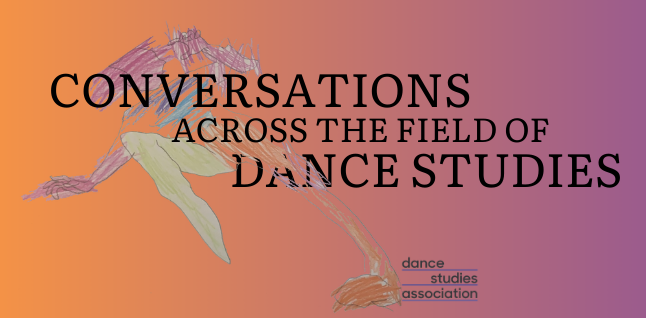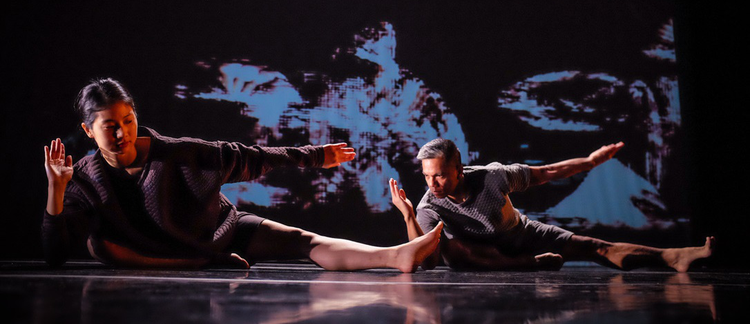Let’s learn some choreography.
I started taking Hollaback! workshops in March 2020. The training is free!
Hollaback!, now known as Right To Be, began as a collective to document street harassment in 2005. Fifteen years later the nonprofit started providing free trainings to combat this kind of hate.1 Right to Be offers many different workshops: bystander intervention in the workplace, at the polls, for youth, and in public spaces, to name a few.2 These trainings are fantastic. They efficiently, in-depth and within an hour, teach individual actions for wide utility. This seems counterintuitive, but teaching the context and variables of street harassment, as well as specific steps to combat it, while not assuming a broad range of traumas, is difficult in an hour-long training. In fact, Right to Be claims that the best action is whatever action you do to combat anti-racism. This is not a reductive concept when considering the extensive levels of harm, trauma, and complexity in a single incident. Their workshops provide options, steps one might be able to take when witnessing or experiencing harassment.
I see what Right to Be offers as a form of choreography. I define choreography here as a series of steps, both literal and metaphorical, against contexts of hate. I use the term “choreography” because the workshops explicitly mention bodies in motion, offer a series of movements to consider in escalated situations, and demonstrate how the practice of embodied contexts matter. If you have not taken a Right to Be workshop or do not have time to, at the very least please look at this nifty guide. We all want to think we know what to do in an escalated situation, but at least with this guide, you can have a series of concrete steps to show up as a bystander, a short dance if you will.
There are three overall steps, five if you include the sub-steps, for Right to Be’s public harassment training: (1) trust your instincts, (2) reclaim your space, and (3) practice resilience.3 I know counting to three is hard when you’re used to counting to eight, but I’m hoping you’ll consider the example I offer next.
On a cold morning in January 2022, I took my dog for a walk before he got cranky. He is already a very vocal Samoyed, but without our early morning walk, he likes to show off his true operatic range. On our walk, a block away from home, an SUV pulls next to us. I refuse to look, knowing that a car that I do not recognize pulling next to me is never a good sign. I remember my choreography from Right to Be’s guide—step one: trust my instincts.4 My instincts say to pay attention, so without looking directly at the car, I include it in my periphery. Despite wishing the car to drive away (maybe the driver needed to check for directions?), the car does not move and a window rolls down. The next step from Right to Be’s choreography is to set my boundary, so I plant and root my feet into the ground. I am glad my choreography recall is working today.
I would have kept walking as another way to set a boundary, but my dog loves to stop at the particular fence we happen to pause alongside. I’m not sacrificing my dog’s joy for whatever this is. I realize it’s been about 30 seconds since I began ruminating on all of this, and I hear the car’s engine still running. It is irresponsible for me not to look directly at this point, at least to see why they rolled down their window. I need to set another boundary and remember the next step is to engage. It is clear when I look up that the older woman in the car has been waiting for me to acknowledge her. The instant I make eye contact, she asks if my dog was indeed my dog. No introduction or hello, just the question, “Is that really your dog?” I stare at her trying to comprehend the question. Why would this not be my dog? Is this really a question about my dog, or does she think I do not belong here? Is there a missing dog that looks like my dog? I remember Right to Be’s reminder to keep eye contact and not to escalate. I wait in confused silence. She asks the question again, looks away, and starts closing her window. Nothing else is mentioned, no explanation, no neighborly greeting, and she drives away. I am thankful that I do not have to document the situation, asking someone next to me to take out their phone or take a photo of the SUV myself. That would have been Right to Be’s second to last step.
The choreography is not over. The last step is to practice resilience. I roll my eyes. I tell my husband what happened when I walk through the door. We sigh deeply together. And I share my story here. I thank Right to Be for the choreography. My event was tame compared to the horrific brutality happening time and again to Asian folks across the country. But I offer it as a practice of resilience, as an example of choreography, and gratitude to Right to Be. Eighteen years ago, while winding through a county fair, two people ran up to me and my then partner, yelled a slur at us, and ran away. I froze. I did not know any of the steps offered by a Right to Be workshop. Obviously, the people around me at the time did not either.
As part of Right to Be’s last step of resilience, I share their resources. I also say names: Michelle Go, Christina Yuna Lee, Maria Ambrocio. I list these as a practice of solidarity and gratitude to the Movement for Black Lives community. The saying of names is one practice of many to learn and embody.5 Tamir Rice, Breonna Taylor, Asia Foster, Dominique Lucious. Bystander choreography is not just for anti-Asian hate. These simple but not easy steps are one way to move as an ally and a bystander for the too many systemic and variable types of hate in our everyday lives. They are not the same kinds of hate, nor are they experienced in the same ways. There are many different types of systemic oppression. Being with one another, knowing the different types, and being open to the difference is part of the choreography. It might also require improvisation.6 I want there to be a dance that both teaches self-preservation and dismantles systemic oppression. I want a dance that is not romantic. I want it to be truthful and flawed and reparative and risk-taking. Most of all, I want it to embody the necessary cry buried and felt by too many. Please learn the choreography. There are so many dances to learn.
Notes
- “Who We Are,” Right to Be, accessed June 23, 2022, https://righttobe.org/who-we-are/. ⮭
- “Hollaback! Has Changed Its Name to Right to Be,” Right to Be, accessed April 28, 2022, https://righttobe.org/. ⮭
- “Responding to Public Harassment,” Right to Be, accessed April 28, 2022, https://righttobe.org/guides/how-to-respond-to-public-harassment/. ⮭
- Ibid. ⮭
- “The Movement for Black Lives,” M4BL, accessed April 28, 2022, https://m4bl.org/ See also, “Say Their Names, K(no)w Justice, K(no)w Peace,” #say their names, accessed April 28, 2022, https://sayevery.name/about. ⮭
- My deepest thanks to SanSan Kwan for helping me arrive at this point. ⮭
Author Biography
Al Evangelista (he/him/his) is an actor, dancer, and choreographer, whose creative processes engage with social justice and performance studies. He is Assistant Professor of Dance at Oberlin College and Conservatory. His multidisciplinary artistic works on queer performance, diaspora, and community-engaged methods have been performed at Steppenwolf Theatre Company, American Theatre Company, Links Hall, Schwartz Center for the Performing Arts, and Moss Arts Center. He has danced in works for Dance Exchange, the Chicago Museum of Contemporary Art, Chicago’s Department of Cultural Affairs and Special Events, and the Inconvenience, as well as performed at Chicago Opera Theatre, Adventure Stage Chicago, among others. He is an affiliate faculty member of Oberlin’s Department of Gender, Sexuality, and Feminist Studies and a faculty fellow in the Center for Communicating Science at Virginia Tech.

